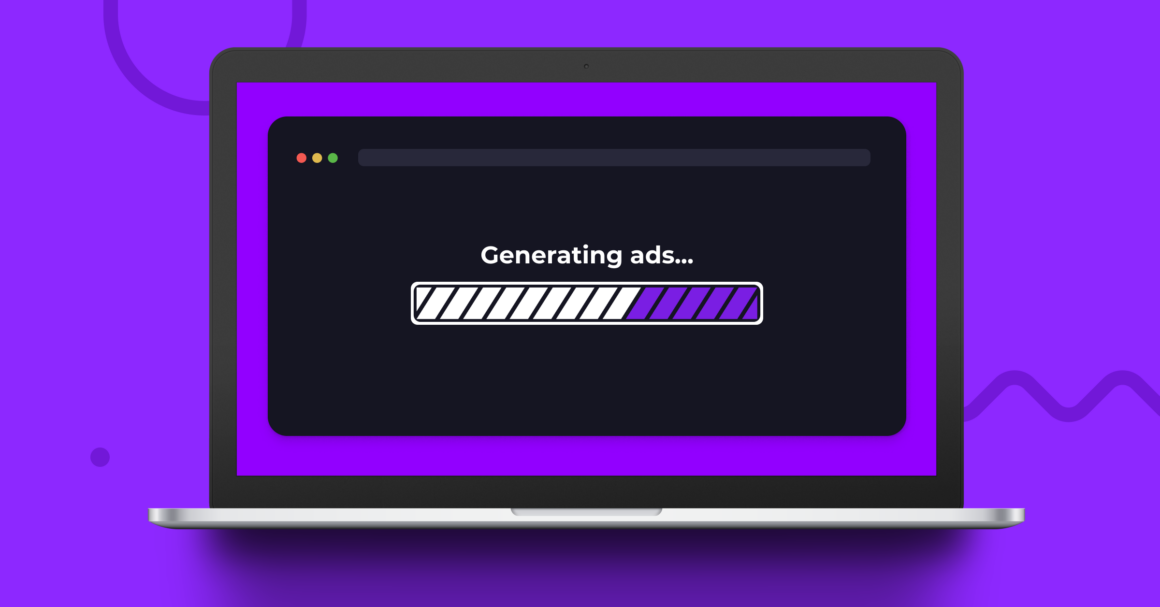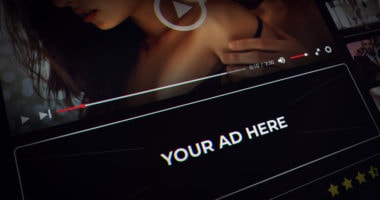The motivations of marketing execs behind jumping on the gen AI bandwagon are varied: some want to explore more innovative formulas and messages, some want to reduce the costs of making a commercial, while others simply want to create anything with AI.
All motivations are perfectly understandable: it’s okay that marketers are dabbling with new technologies; they don’t have to have a clear view of what is the best way to use this advanced tech straight away.
Everyone is probing what benefits it can bring. Some are jumping with all they’ve got, only to retract a few steps later. Others are more cautious.
It’s like with the introduction of most new technologies. Take EVs: Hertz, for example, announced the electrification of their fleet only to sell most of its electric cars after a couple of months. Other companies offer EVs as a novelty to their customers or as part of greenwashing efforts.
Check the list of AI advertising examples below to learn where the industry is going!
The Pros and Cons of AI in Digital Marketing
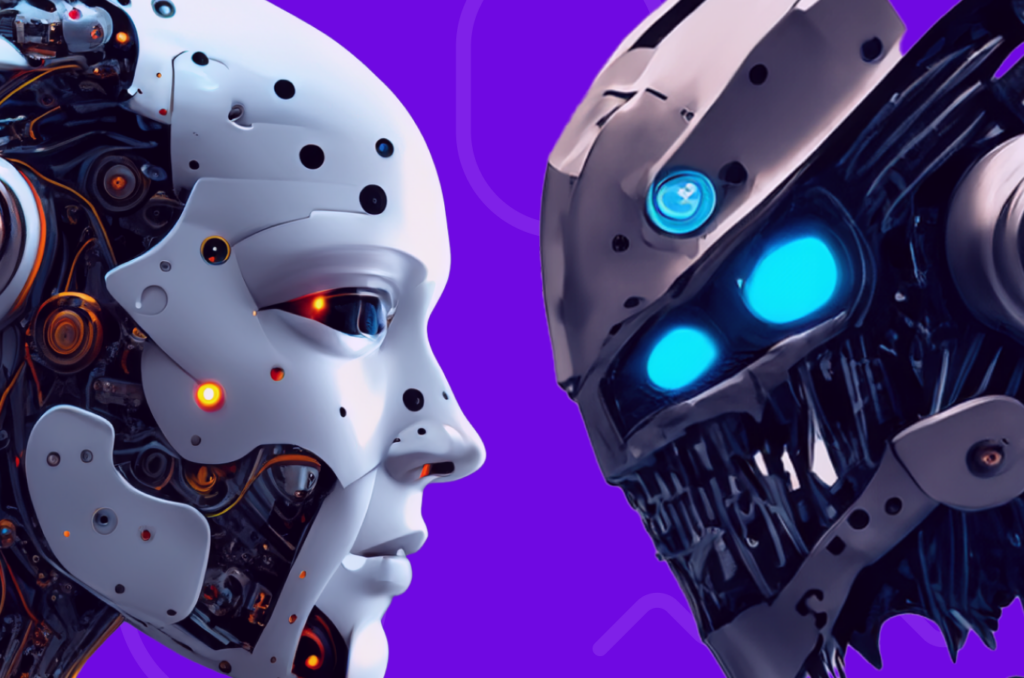
AI is yet another tech that is rumored to save the ad industry. Save from no danger, since the money involved in this type of advertising is only going up. But the industry is always looking for the ‘next big thing,’ and AI has all the qualities for fulfilling that desire.
The previous hype trains were focusing on VR/metaverse, and before that on blockchain. None of these technologies have revolutionized the way ads are being viewed and paid for (yet), but AI is still revealing its potential. Let’s go over what benefits and risks it involves.
Benefits of AI in Advertising
- Cost reduction: The biggest draw of generative AI is that it can produce plenty of content for cheap. This can either help reduce the budgets of marketing departments, increase wages of senior professionals, or reserve more money for better ad placements.
- Higher quality: AI-produced content can be tailored almost indefinitely, making it easier to achieve the best results. Smaller marketers can have access to better quality graphics, elevating the browsing experience for all users.
- Personalization: Quick content creation may allow marketers to produce more variations of content for clearly outlined audience segments. From web pages translated to different languages to headlines that take into account different emotionalities of younger and older Internet users, AI can make advertising feel more personal.
Risks of AI in Advertising
- Spamming: Creating content at scale may tempt marketers to use the oldest online advertising technique: spamming. If marketers have access to large email databases or cheap sources of traffic, they can put their message everywhere – with the help of AI.
- Lack of creativity: Since AI is a probabilistic model that guesses the most fitting words, it kind of averages out the creative level of all generated texts. Content will be good, serviceable but not groundbreaking. If CMOs trust AI fully, this may degrade the overall browsing experience for everyone.
- Inaccuracies: Generative AI may sometimes hallucinate and produce inaccurate results. Marketers need to carefully verify each claim produced by AI to avoid misinforming the public.
- Privacy & copyright: These two issues are yet to be addressed fully on a legislative level. It is hard to tell how the copyright of content produced by AI will look like in the future. New laws may limit the usefulness of generative AI in marketing.
How AI is Changing the Advertising Landscape
The best answer should fall somewhere along the lines of “it’s too early to tell.” Nevertheless, we can identify key areas where AI is being tested and used:
- Targeting: This is the aspect where AI is used to make sure that an ad is seen by the most fitting audience. The use of algorithms in targeting predates the introduction of ChatGPT by several years and is to this day the most impactful use of AI in digital advertising. Huge ad platforms such as Google or Facebook have learning algorithms that check what works on concrete segments of people. Even Voluum has its AI-powered A/B testing tool.
- Personalization: Personalization efforts vary from mild to industry-changing. The simplest approach is to use AI-fueled product recommendation mechanisms that can create feeds with suggested items or similar products. The most advanced algorithms can tailor the whole advertorial page to the needs of a concrete user.
- Content creation: It’s not hard to create promotional content. The challenge is to make it at scale while keeping the costs down. AI is definitely not better than experienced graphic designers or content writers, but it surely is cheaper and faster. And if it yields ‘good enough’ results, it can be safely used as a cost reduction mechanism.
- Ad optimization: Fine-tuning of ad content and ad delivery was the core of many marketing efforts back in the day. A/B testing or multivariate testing was one of those things that separated newbies from pros. Nowadays, this can be only a matter of pushing a button. If gen-AI can generate content for whole landing pages, then asking it for generating variants of already existing pages is no big deal. Provided that there’s a large enough volume of traffic to perform such tests, AI can create and test multiple versions of a given page, ad, headline, or other, giving a marketer instant recommendations.
While marketers still learn and explore the benefits the use of AI may bring them, it is yet unclear which one of these areas will have the biggest effect on the industry.
Nevertheless, AI is already used in marketing, and it is used in more places than you realize. In this article, we will go over some of the boldest, most innovative AI advertising examples, starting with the least flashy and more subtle, ending with the most surprising.
The List of AI Advertising Examples:
1. AI-generated product descriptions
Writing descriptions of thousands of products on platforms such as Alibaba is a chore. That’s why Alibaba and Sephora have used AI to generate product descriptions for their products. Alibaba’s AI can generate product descriptions in seconds, while Sephora’s AI can generate personalized product descriptions based on customers’ skin types.
Yelp has also stepped into the AI arms race and started using AI to provide auto-generated business descriptions.
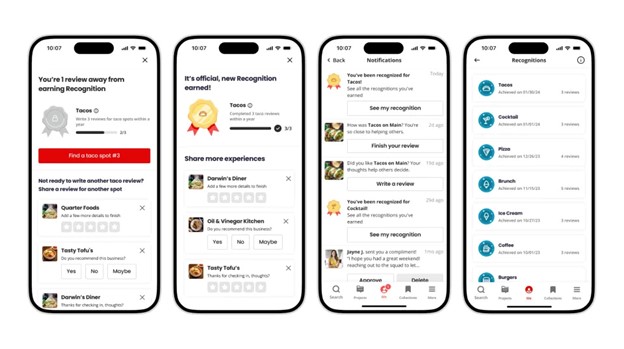
This is a relatively small but powerful cost-saving mechanism that ensures that each customer gets all the information needed. Plus, this information can be personalized. For example, a description may not only talk about the product but also if it will be good for a user that submitted their preferences before, or if the product will solve a problem a user may have.
2. AI-powered product recommendations
Algorithmic recommendations feel like old tech at this point. But what if they were actually good? Companies like Amazon and Netflix have been using AI to provide personalized product recommendations to their customers, with feeds such as ‘You may also like’ or ‘Selected for you’.
But generative AI can ask some prequalifying questions and justify the suggested products and, what is even more important, accept comments and criticism. You could train your AI-powered shopping assistant not only with your purchase choices but also through your direct input.
This is the approach that Amazon took with the announcement of their smart shopping assistant Rufus. The assistant is said to be capable of providing product comparisons, reviews, and suggestions, taking into account customer’s preferences, occasions such as birthdays or Valentines, and other.
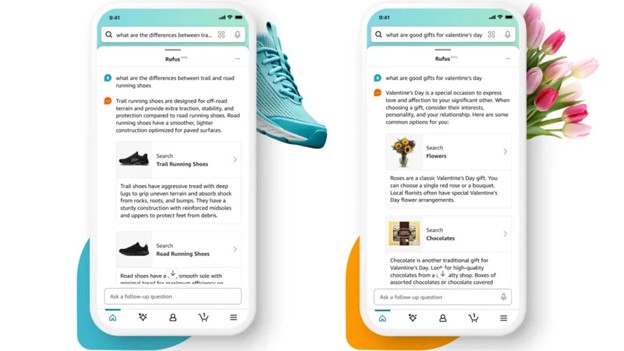
Rufus is probably the first of the batch of the new generation of virtual assistants but surely, many more will follow.
3. Virtual influencers
Influencer marketing may allow brands to access devoted audiences.
But, on the other hand, it ties them to a concrete person, whose reputability and fame may be destroyed pretty quickly. Virtual influencers won’t ever get caught in a scandal; they will always be nice and beautiful.
For example, Balmain used a virtual influencer named Margot to promote their new clothing line, while Calvin Klein used a virtual influencer named Lil Miquela to promote their new fragrance. You know what’s great about them? These influencers will always say what the company wants, in a given tone, with concrete emotions. What else is there to have?
Credibility may be a problem. After all, people seek contact with other people, even if this contact is asymmetrical and occurs online only. There may be no incentives for people to care about what essentially a soulless algorithm ‘thinks’ or ‘does.’ But, on the other hand, if all a person does is watch Instagram – what’s the actual difference?
4. AI-generated ads
The least surprising yet the most impactful entry on this list. It is astonishing that marketers can create not only simple headlines but whole videos out of thin air. But let’s sort things out.
There are ad platforms such as Meta that give gen AI tools to marketers to help them with creating ads.
There are also well-known brands that have used AI to launch whole marketing campaigns.
The prime example is Coca-Cola. The sweet drink company had always pursued the newest trends in advertising, and they didn’t change the attitude during the AI revolution. They partnered with ChatGPT’s creator company OpenAI to combine artificial intelligence with their internal systems. The innovations are surely to follow but they kicked off this partnership with a contest for customers, where the company asked them to use Open AI’s tools to create art involving Coca-Cola’s historic ads.
Burger King claims it was the first company to create an ad using only AI that was aired on television. Their Burger King 2050 ad falls somewhere into the uncanny valley but it surely drew views and engagement.

Another company heavily using AI is Nike. The video of a virtual match between young and old Serena Williams may be the best example AI advertising ever. It is great in many aspects: it involves a beloved figure, it is well-made, it is based on emotions and greatly commemorates Nike’s 50-year anniversary.
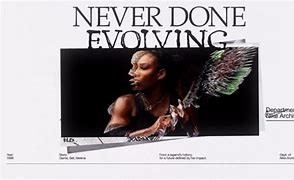
5. AI-created products
This is the inevitable outcome of employing AI to do everything. Why personalize or optimize ads for products when you can create perfectly personalized products already? Then the ad will always work.
We are not at the point where AI is making groundbreaking discoveries that trickle into our everyday lives. But we are not that far off.
But what if AI could bring you the perfect blend of coffee? Or more ambitiously: a new fashion item? Sounds promising? Threatening? Pointless? All those things?
Let’s start with packaging: Nutella has used AI to create 7 million unique labels for jars of Nutella. Not a single pattern was repeated.
Imagine the faces of people in the creative department that were tasked with creating 7 million unique label designs. For AI, it is a matter of a good prompt and a lot of computing power.
What about creating a fake version of a product, so you can find a real version easier? Google is expanding on its Search Generative Experience to accommodate users who can picture the item but can’t find it. Soon, they can provide a text description and SGE will generate a photorealistic version of their imagining. And then help them find it.
The More Things Change, the More They Stay the Same
This mantra still holds up even in the age of the AI revolution. After all, the industry will still rely on people promoting products to prospective customers. AI will only reinforce this model, make it more efficient but won’t change any principles.
The key difference AI is likely to bring is an increase in the distance between marketers that can’t afford or don’t know how to use AI and marketers that embrace it as a tool, not a replacement for experienced workers.
And remember, even AI-generated ads will need to be tracked. For that, you can use Voluum, a cloud-based tracking platform that uses AI to perform automatic A/B tests.

